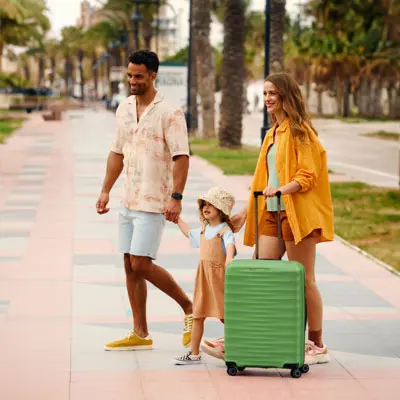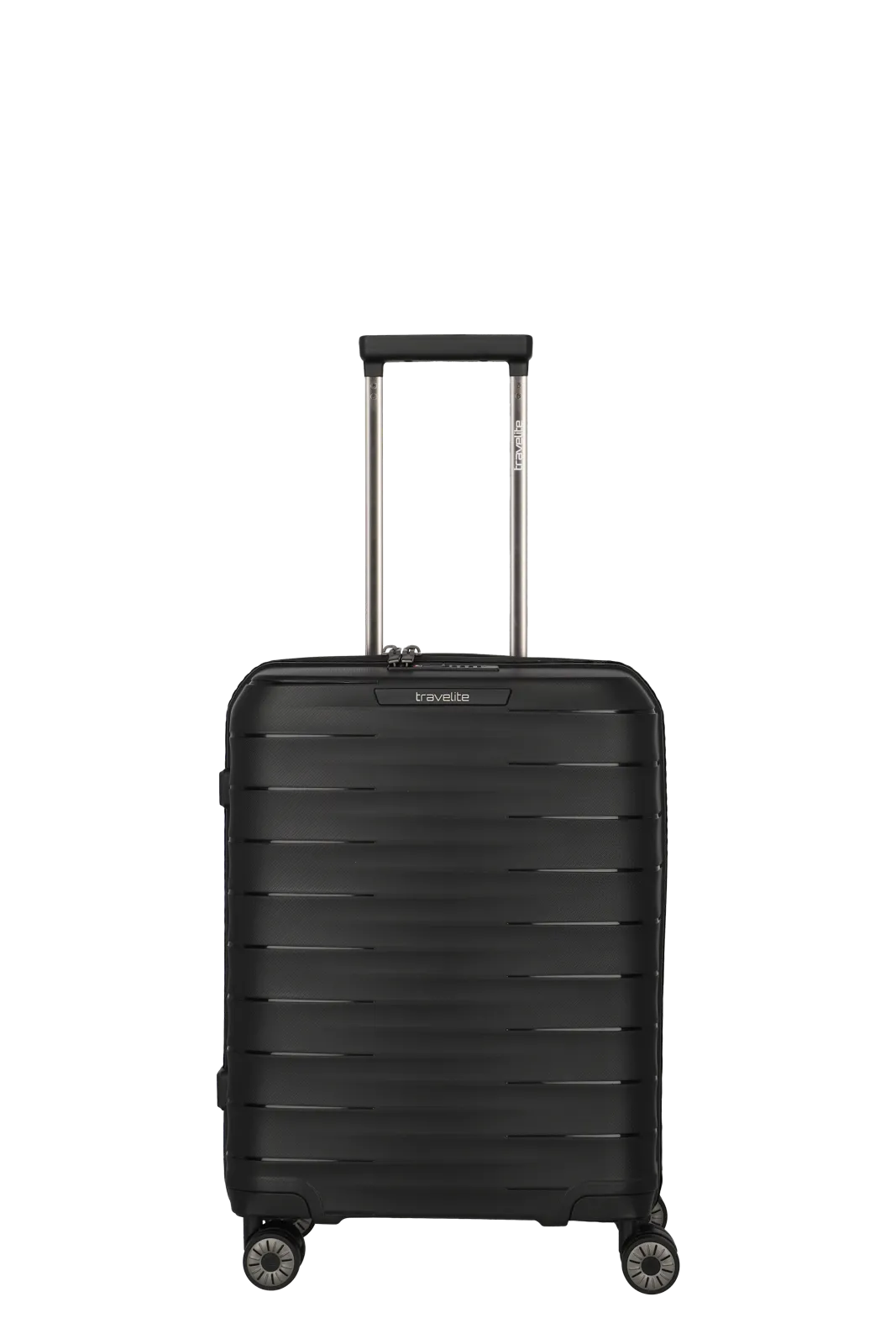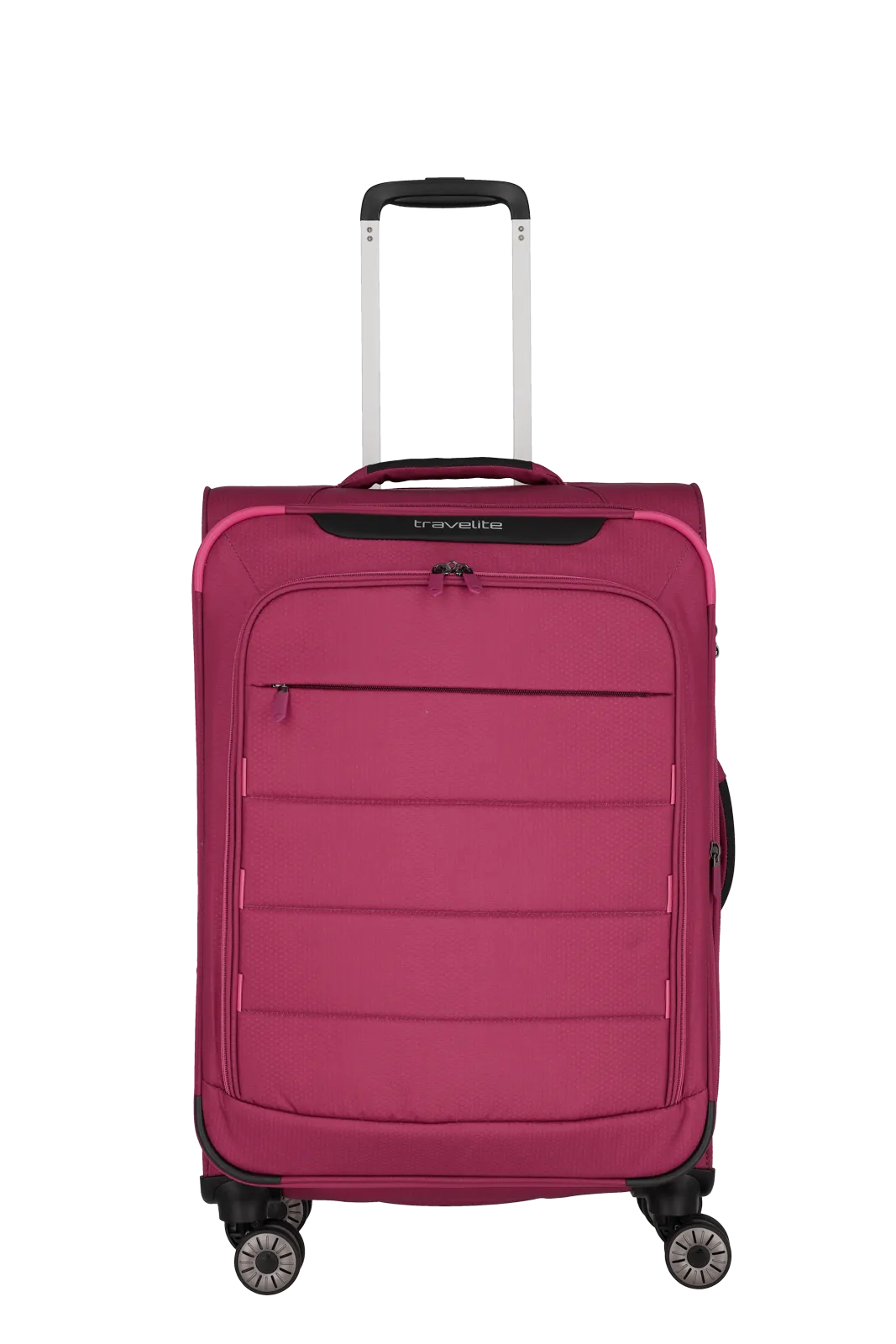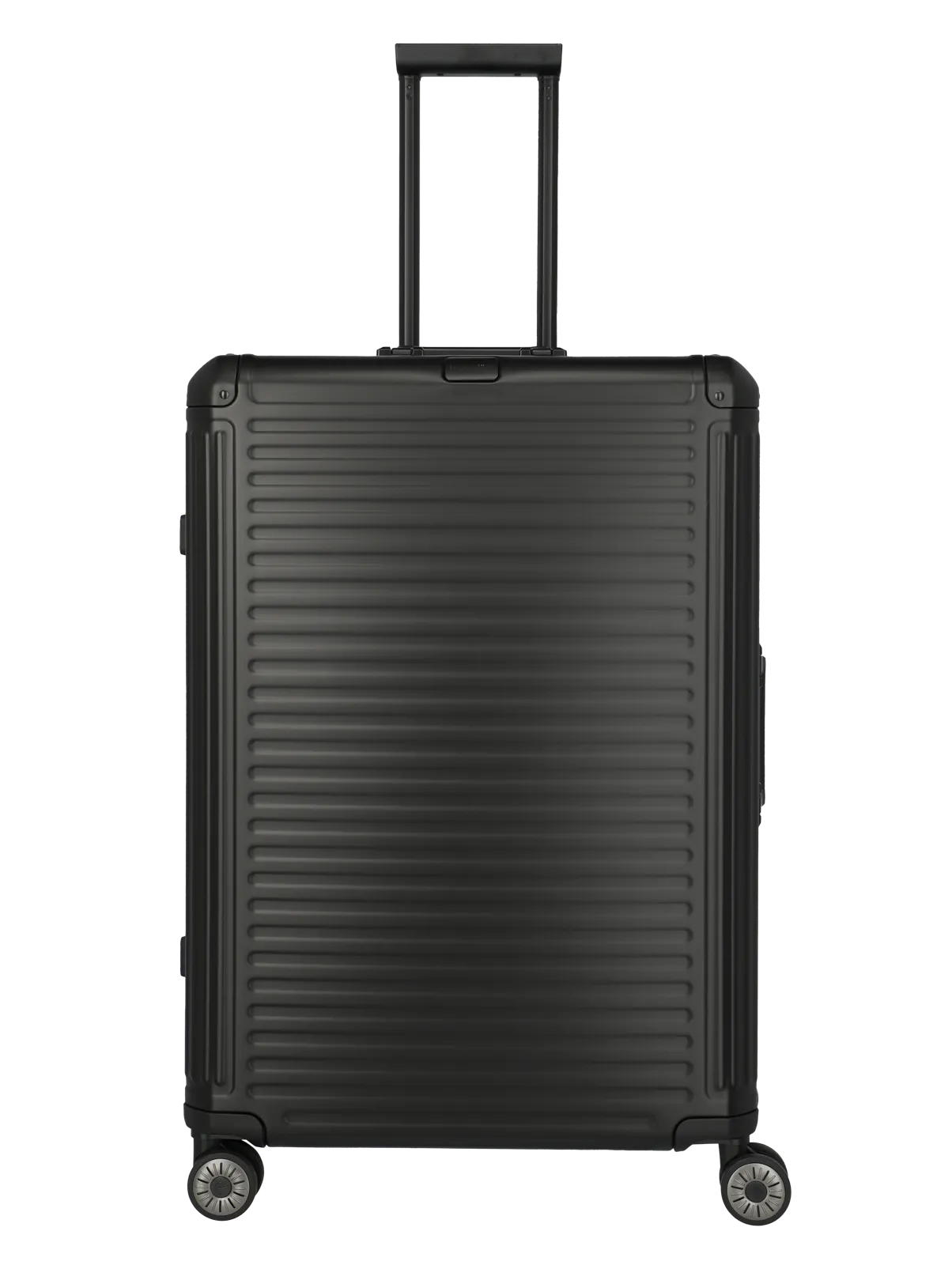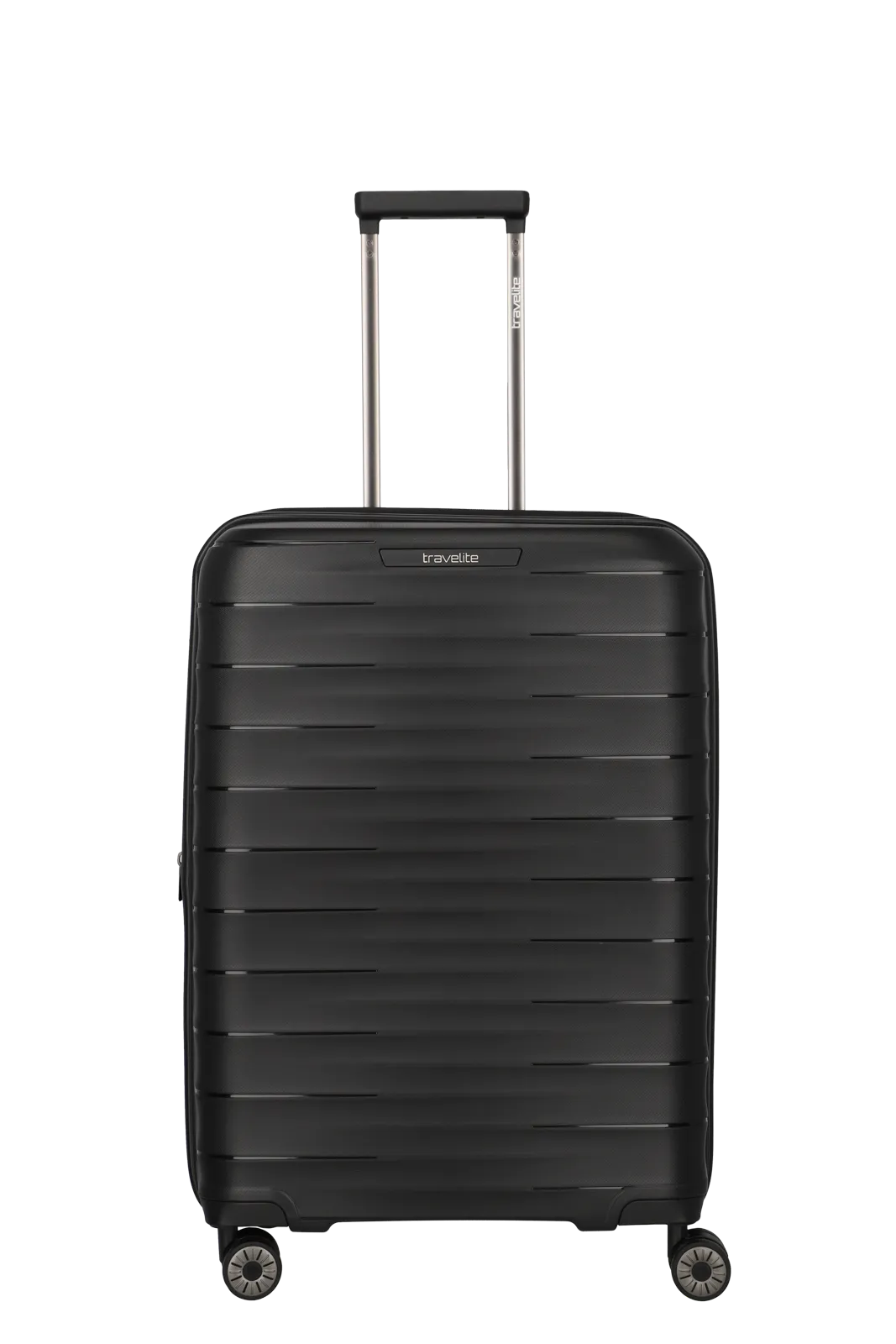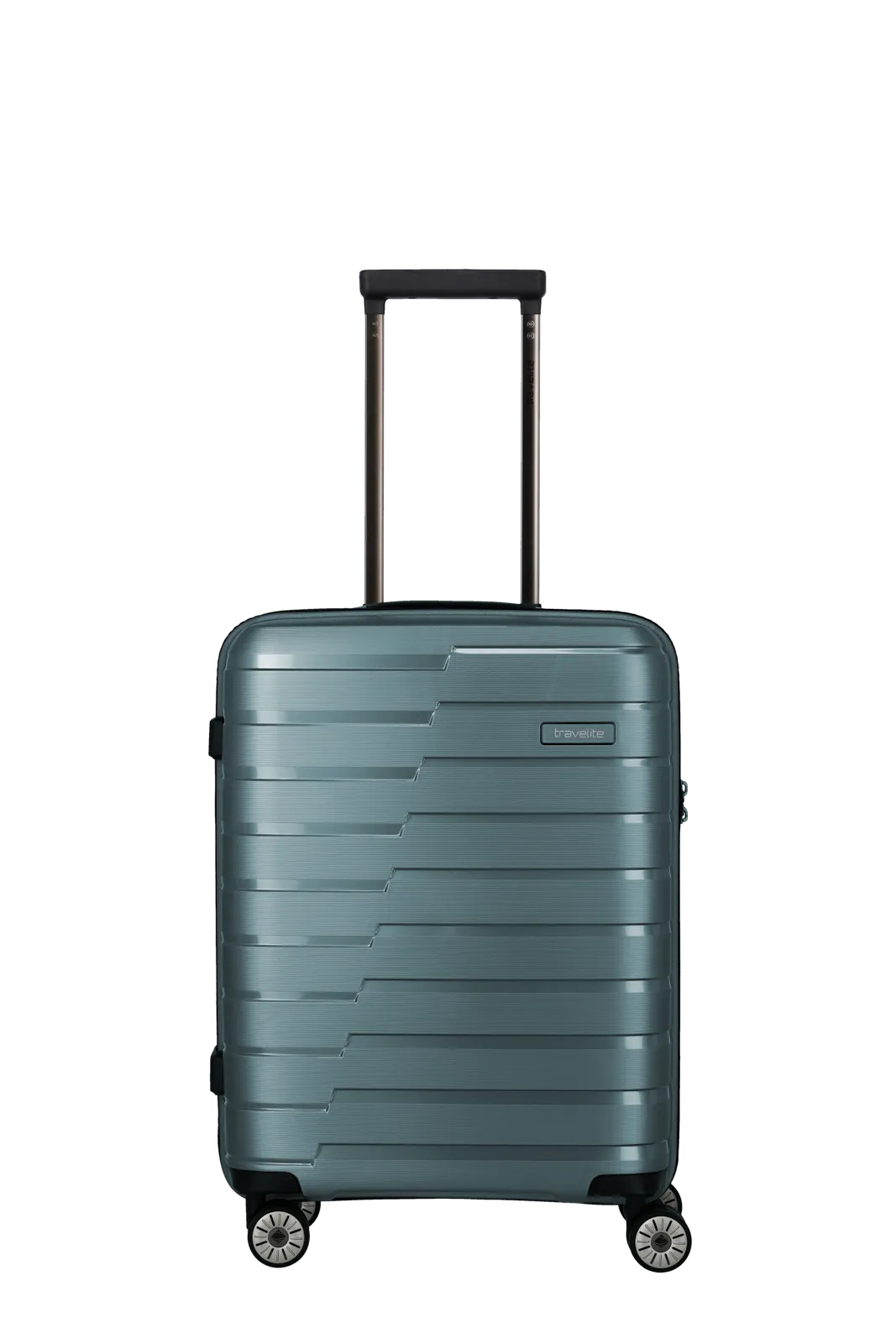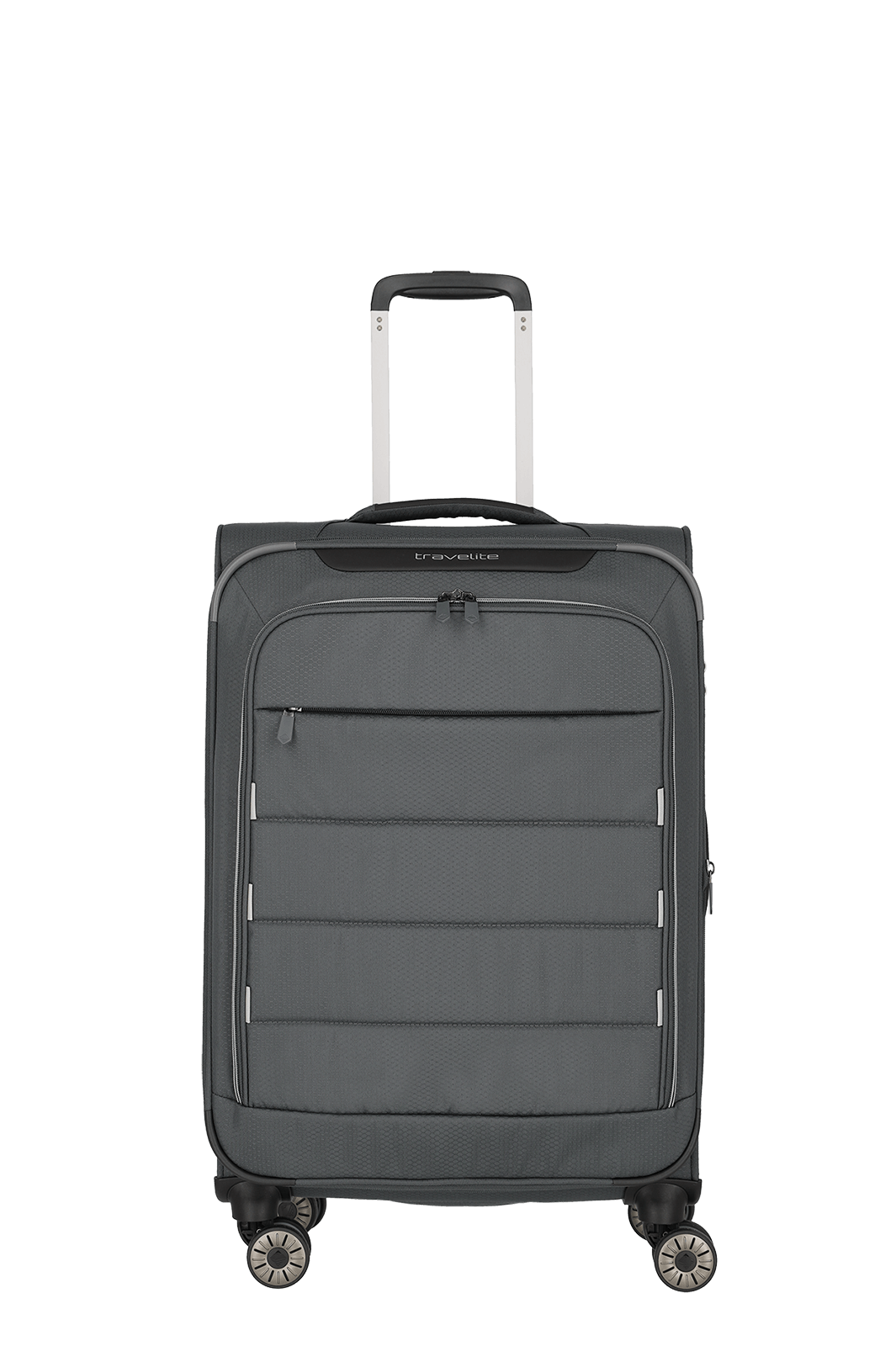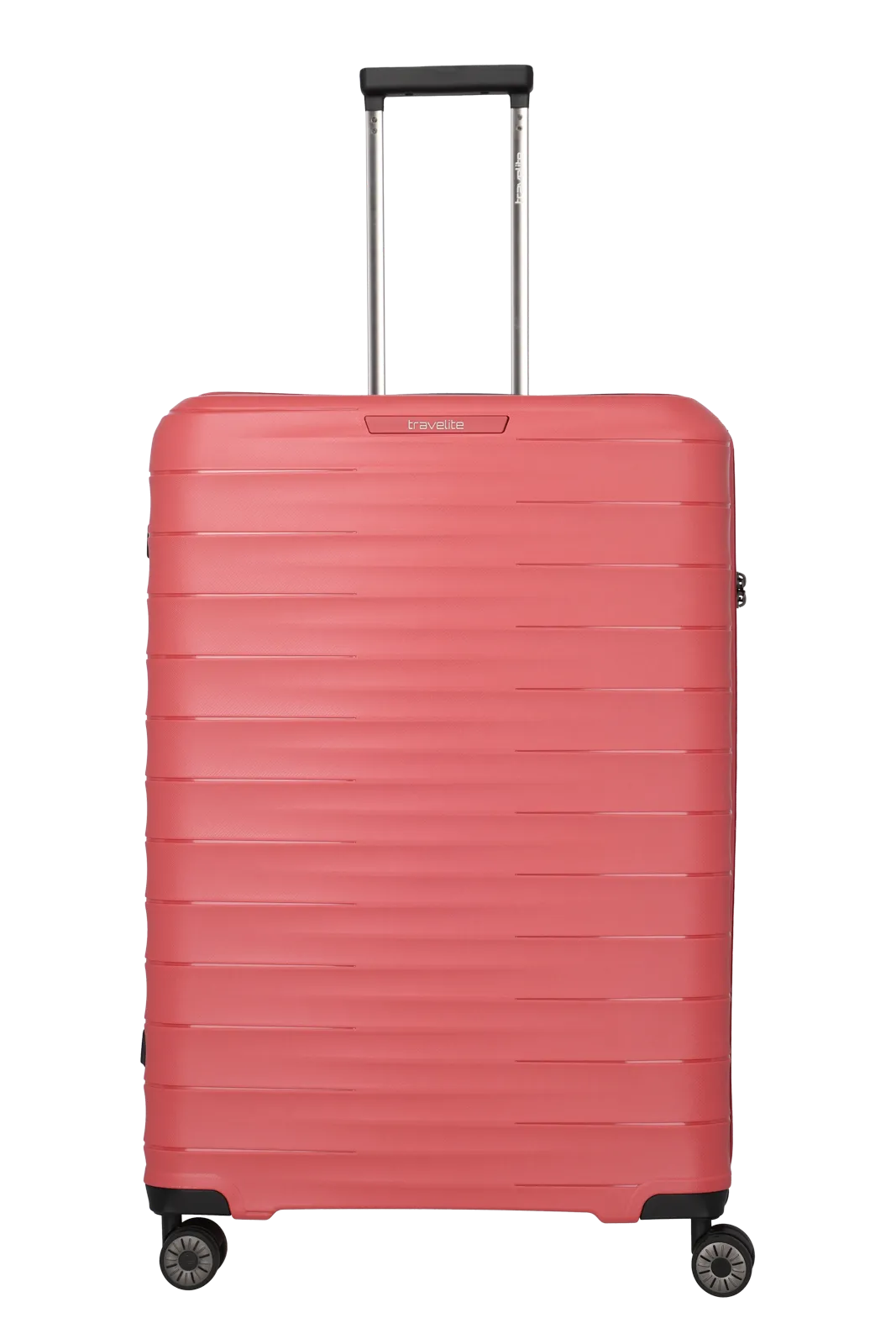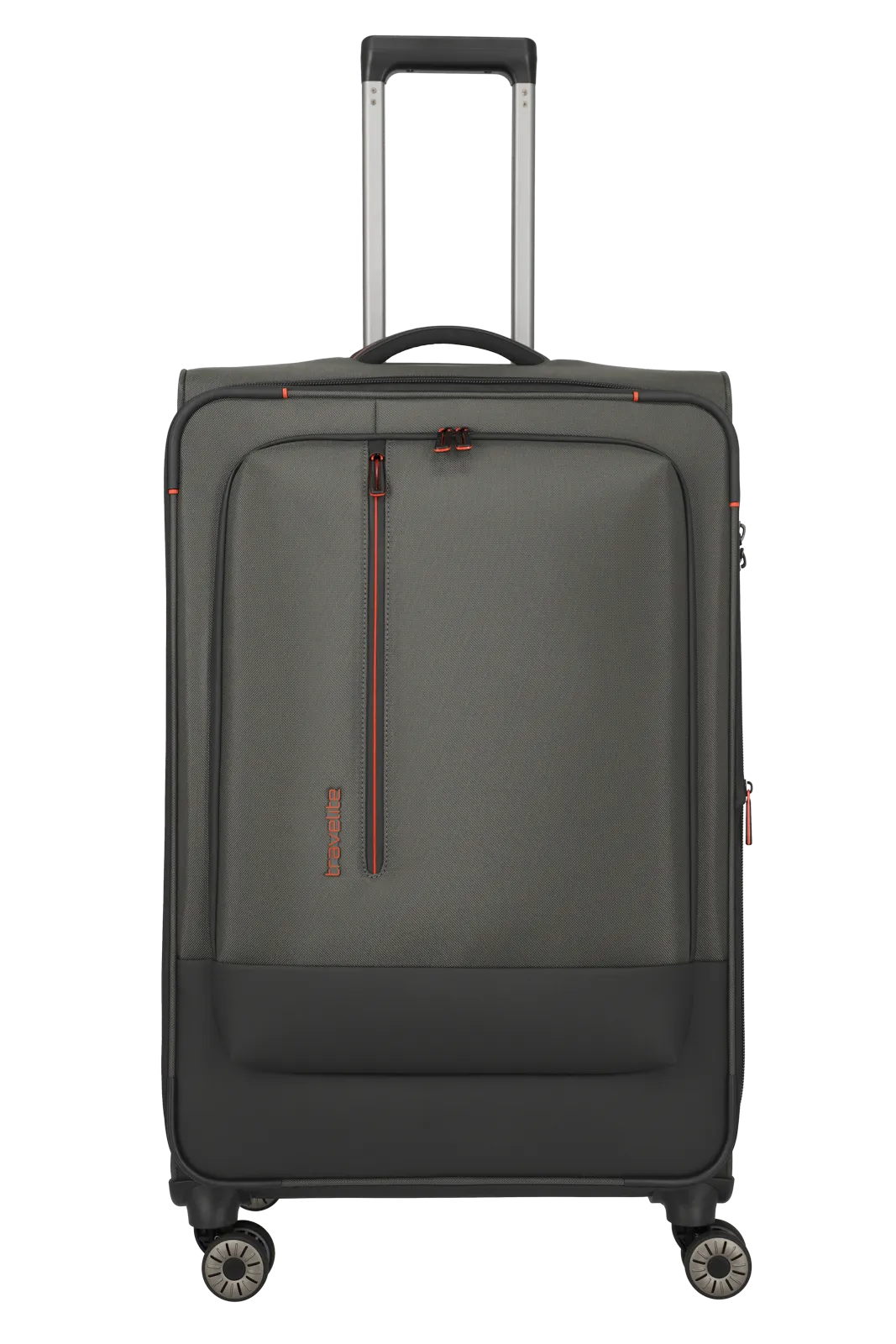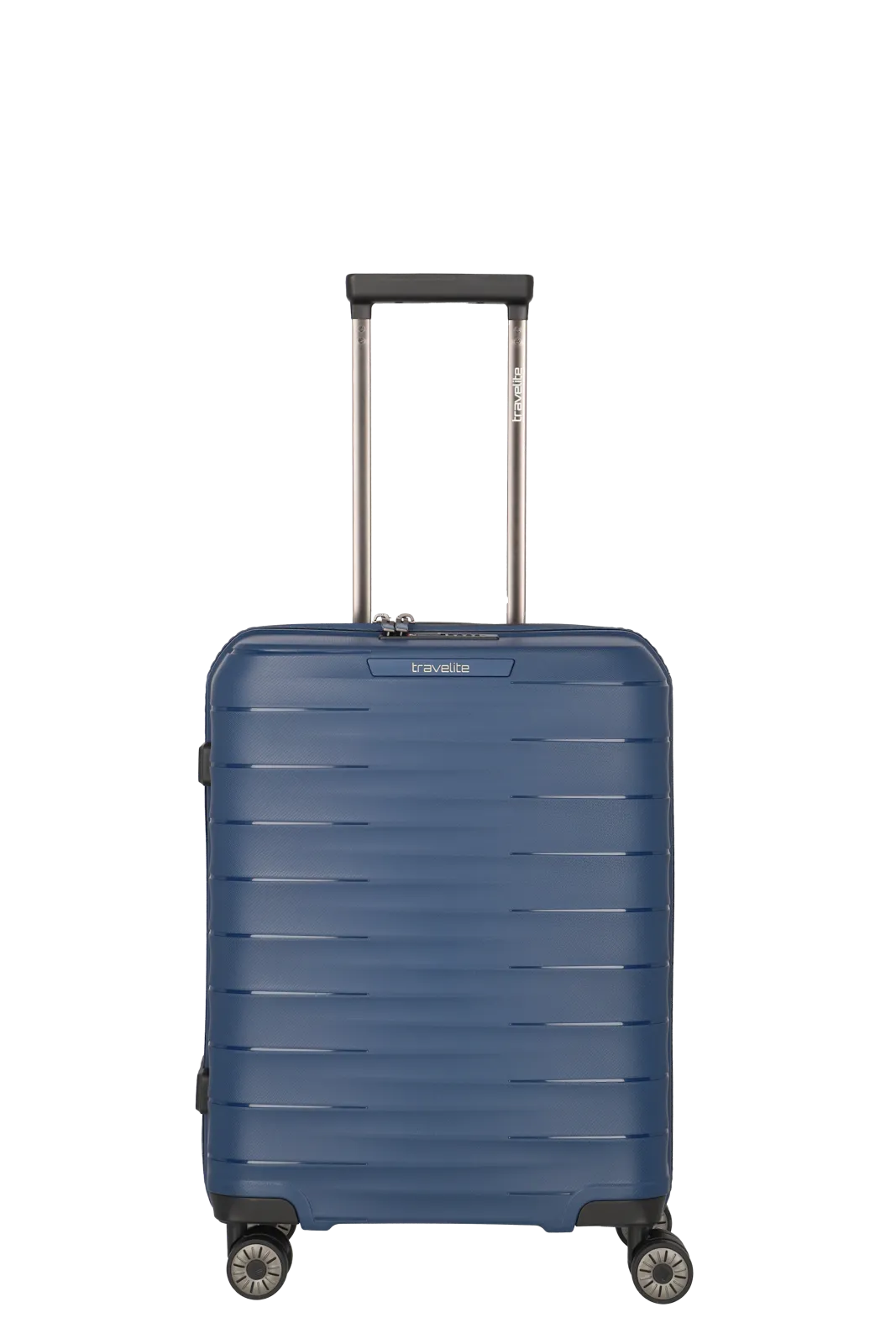

Safari through Namibia: How to make your road trip a success
Safari through Namibia: How to make your road trip a success
Coasts and canyons. Wilderness and vastness. Seas of dunes and dolerite rocks. But above all: lions, zebras and giraffes. The epic beauty of Namibia - with all its majestic wildlife - must be seen with your own eyes. No words or photos can convey what you experience on the ground. Namibia is a very special travel experience.


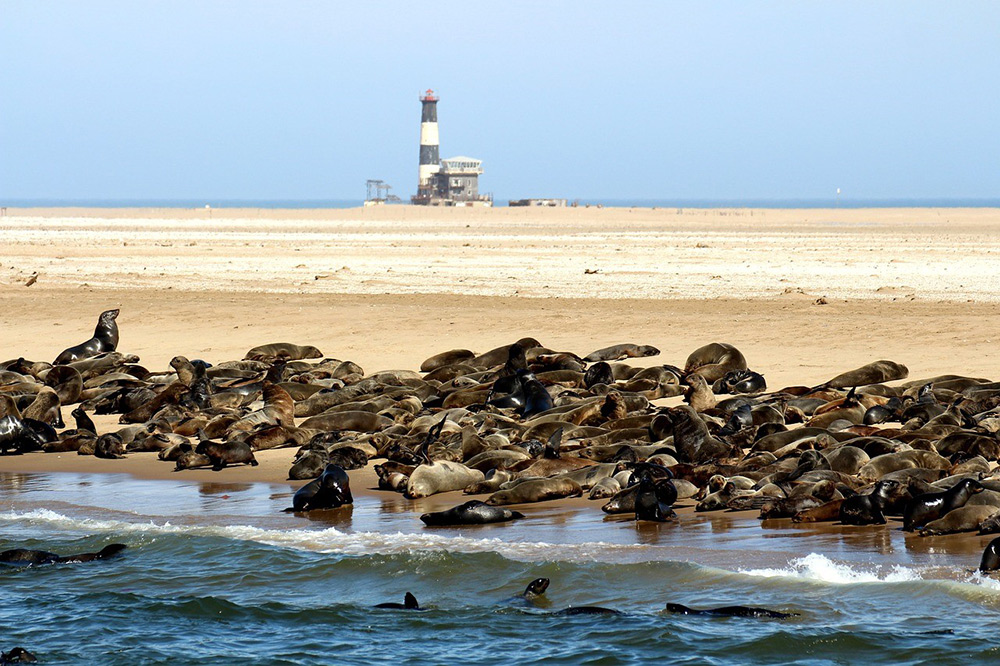

What many people particularly like on their tour through the South African country: you can explore the unique landscape yourself in a rental car and decide individually which places you want to see and where you pitch your rooftop tent on the campsites of the national parks to watch elephants pass by.
To help you with your planning, we have put together an itinerary with the best sights, as well as tips for preparation and your packing list.
Safari through Namibia - the top 5 sights on one route
Your safari start - Let's go at the airport
Lufthansa and Eurowings take you from Frankfurt with feeder flights from all over Europe to Windhoek, Namibia's capital. Your road trip with your rental car starts here. As soon as you have left the airport heading south, you are already right in the middle of it. It only takes a few minutes to drive through the incredible scenery.
#1 Namib Desert
We recommend the Namib Desert, the oldest desert in the world, as your first destination. It is said to be over 80 million years old. Sounds boring and like "just sand"? Far from it. The Namib Desert is a natural phenomenon that will amaze you with its diversity. Sometimes gigantic sand dunes rise up into the air, sometimes you look at rocks, other times at the sea. And then there are always clay pans with trees that are over 500 years old.
There are countless places to visit in the region:
- Lüderitz for a catamaran tour in the morning to see penguins and seals
- Kolmannskuppe, the forgotten city of diamond hunters
- Tirasberge for unique dune or guided succulent tours
- Fish River Canyon, the second largest canyon in the world after the Grand Canyon
#2 Sossusvlei & Sesriem Canyon

Continue the journey north to Sossusvlei. Many people think that this is simply one of the most famous dunes in Namibia. But it actually refers to the region. You will certainly have seen photos of Sossusvlei before: Bright orange sand hills that are among the tallest dunes in the world with a height difference of over 380 meters. Here you should definitely visit the "Big Daddy" - the highest dune.
Not far away is the Sesriem Canyon. A highlight here is definitely a guided hike, during which you walk through the 30-metre-deep and three-kilometre-long gorge
Finally, you can relax in the Kulala Desert Lodge. The lodge has private access to the nature reserve, offers balloon rides and has designed all rooms to give you a perfect view of the starry Namibian sky. As a campsite, we recommend the Sossus Oasis.
#3 Walvis Bay & Swakopmund

From the desert and dune landscape, we are next drawn to the water. To the port city of Walvis Bay, on the coast of Namibia. Overlooking the South Atlantic, you can watch pelicans and flamingos while small fishing boats bob back and forth in the waves. Why is this place a must-visit? Because you can go on a boat safari from here, where you will see the "Big 5" of the sea: whales, dolphins, moonfish, leatherback turtles and sea lions.
You can then relax and head to Swakopmund - the harbor town that is particularly popular with tourists. Magnificent buildings, a beautiful promenade, the sea breeze on your skin - take a leisurely stroll through the streets. Or book one of the many activities. You can go on a canoe tour , go sandboarding in the desert" or ride a horse along the beach". Swakopmund attracts visitors with its many possibilities
The Burning Shore Beach Lodge is the best starting point for all these activities. What's more, there's even a bit of celebrity flair here: Even Brad Pitt and Angelina Jolie have stayed in one of the rooms.
#4 Cape Cross & Skeleton Coast Park

We move further north. Our next destination is the largest seal colony in the world, Cape Cross. An estimated 200,000 seals frolic on the beach here. In December and January, there are even more: Baby seals are born. But beware: what sounds totally cute is associated with a strong smell. What's more, this is "pure nature". You will not only discover cute youngsters, but also dying animals. The "Circle of Life" comes full circle at Cape Cross.
Since your arrival in Swakopmund, you have already been at the Skeleton Coast. Where does the name come from? On the coast, the cool currents of the ocean meet the hot winds of the Namib Desert. This creates a fog that has already blocked the view of many ships and caused them to run aground. Shipwrecks line the beach, as do the bones of beached whales. The scenery is not for the faint-hearted. But offers so much more:
We suggest you visit the Terrace Bay Resort to stay. This is a simple, small wildlife hotel right on the coast, which is not just the top choice for anglers. From here, you can hike on the Ugab River Hiking Route, watch birds and other animals on the Uniab Delta Walk. Or take day trips to Damaraland with its highlights such as the Brandberg or to the World Heritage Site Twyfelfontein.
You want the ultimate wilderness experience? Check into Wilderness Hoanib Skeleton Coast Camp on. A three-day stay includes tours to the coast and a flight over the region.
#5 Etosha National Park

Speaking of wildlife. Our last destination is probably what everyone associates with a "real safari". Etosha National Park is a classic African national park with information centers and camps. And home to the "Big Five" - or the "Big Four". Because while you can spot lions, leopards, rhinos and elephants here, you will search in vain for buffalo. But that certainly won't dampen your euphoria. Snoozing lions in the golden savannah grass, elephants on their way to the waterhole, elegant giraffe families, leaping herds of antelope - 763 km of open roads offer the ultimate self-drive safari.
You want even more action? Then a ride in an open jeep is just the thing. Take one stalk a ranger and learn all about this fantastic wildlife.
There are some great campsites inside the park where you can pitch your rooftop tent. The Namutoni Camp is perfect for going on safari or driving. Several trees provide shade here during the day, while you can linger at the barbecue area in the evening. An absolute top tip: the Olifantsrus Camp. In addition to the pitches, it has a viewing tower with two levels, from which you have a very close view of a waterhole that attracts a wide variety of animals.
The end of your safari - back to the airport with great memories in your luggage
Of course, your road trip through Namibia doesn't have to end now. But you can easily drive back to Windhoek from Etosha National Park. Your self-drive safari comes full circle.
Safari through Namibia - the preparations
Have you got a taste for it and would like to go straight away? Before you set off on your trip to Namibia, we recommend that you take care of a few organizational things in Germany. Here we are thinking primarily of the five points: Vaccinations, rental car, international insurance, campsites, visa
#1 Vaccinations: Even if there are no mandatory vaccinations when entering the country directly from Germany, it Foreign Office that your standard vaccinations should be up to date. You can also ask your doctor for advice on additional vaccinations.
#2 Rental car: To explore Namibia yourself and stay overnight at campsites, it is best to rent a 4x4 off-road vehicle with a roof tent. The best-known off-road vehicle rental in Namibia is Asco Car Hire. Less well-known - but more personal - is Frank's rental company, NAMBOZI.
#3 International insurance: Check with your health insurance provider before you fly whether your insurance is also valid in Namibia. If not,take out international travel health and repatriation insurance for the duration of your stay.
#4 Campsites: In principle, you are not allowed to camp in the wild in Namibia. But there are official campsites that you can simply book into. You can find them via Google Maps or via the app Tracks4Africa. You park your car on an assigned pitch, which often has a barbecue area and sometimes also a direct water and electricity connection.
#5 Visa: You can absolutely relax here. You do not need a visa for Namibia if you do not want to stay in the country for longer than 90 days for tourism purposes. On arrival, you will receive the free entry stamp (Visitors' Entry Permit).
Safari through Namibia - This should be on your packing list
On a self-drive safari through Namibia, you will ideally have a not too large soft luggage trolley with you. Remember that the space in your off-road vehicle is limited. It's an advantage if your suitcase A) is no bigger than size M and B) simply opens upwards with a fabric lid instead of having to be opened like a large book, as with a hard-shell suitcase.
- Insect sprays such as Nobite or Autan against malaria mosquitoes in the culture bag
- Solar Charger for your cell phone, so you can always use Google Maps as a navigation system and find your campsites with the Tracks4Africa app
- travel first-aid kit with remedies for nausea, insect bites as well as plasters and wound healing creams
- travel cutlery and reusable tableware
- Long clothing against insect bites and the sun
And, of course, everything else you need when traveling.
Coasts and canyons. Wilderness and vastness. Seas of dunes and dolerite rocks. But above all: lions, zebras and giraffes. The epic beauty of Namibia - with all its majestic wildlife - must be seen with your own eyes. No words or photos can convey what you experience on the ground. Namibia is a very special travel experience.




What many people particularly like on their tour through the South African country: you can explore the unique landscape yourself in a rental car and decide individually which places you want to see and where you pitch your rooftop tent on the campsites of the national parks to watch elephants pass by.
To help you with your planning, we have put together an itinerary with the best sights, as well as tips for preparation and your packing list.
Safari through Namibia - the top 5 sights on one route
Your safari start - Let's go at the airport
Lufthansa and Eurowings take you from Frankfurt with feeder flights from all over Europe to Windhoek, Namibia's capital. Your road trip with your rental car starts here. As soon as you have left the airport heading south, you are already right in the middle of it. It only takes a few minutes to drive through the incredible scenery.
#1 Namib Desert
We recommend the Namib Desert, the oldest desert in the world, as your first destination. It is said to be over 80 million years old. Sounds boring and like "just sand"? Far from it. The Namib Desert is a natural phenomenon that will amaze you with its diversity. Sometimes gigantic sand dunes rise up into the air, sometimes you look at rocks, other times at the sea. And then there are always clay pans with trees that are over 500 years old.
There are countless places to visit in the region:
- Lüderitz for a catamaran tour in the morning to see penguins and seals
- Kolmannskuppe, the forgotten city of diamond hunters
- Tirasberge for unique dune or guided succulent tours
- Fish River Canyon, the second largest canyon in the world after the Grand Canyon
#2 Sossusvlei & Sesriem Canyon

Continue the journey north to Sossusvlei. Many people think that this is simply one of the most famous dunes in Namibia. But it actually refers to the region. You will certainly have seen photos of Sossusvlei before: Bright orange sand hills that are among the tallest dunes in the world with a height difference of over 380 meters. Here you should definitely visit the "Big Daddy" - the highest dune.
Not far away is the Sesriem Canyon. A highlight here is definitely a guided hike, during which you walk through the 30-metre-deep and three-kilometre-long gorge
Finally, you can relax in the Kulala Desert Lodge. The lodge has private access to the nature reserve, offers balloon rides and has designed all rooms to give you a perfect view of the starry Namibian sky. As a campsite, we recommend the Sossus Oasis.
#3 Walvis Bay & Swakopmund

From the desert and dune landscape, we are next drawn to the water. To the port city of Walvis Bay, on the coast of Namibia. Overlooking the South Atlantic, you can watch pelicans and flamingos while small fishing boats bob back and forth in the waves. Why is this place a must-visit? Because you can go on a boat safari from here, where you will see the "Big 5" of the sea: whales, dolphins, moonfish, leatherback turtles and sea lions.
You can then relax and head to Swakopmund - the harbor town that is particularly popular with tourists. Magnificent buildings, a beautiful promenade, the sea breeze on your skin - take a leisurely stroll through the streets. Or book one of the many activities. You can go on a canoe tour , go sandboarding in the desert" or ride a horse along the beach". Swakopmund attracts visitors with its many possibilities
The Burning Shore Beach Lodge is the best starting point for all these activities. What's more, there's even a bit of celebrity flair here: Even Brad Pitt and Angelina Jolie have stayed in one of the rooms.
#4 Cape Cross & Skeleton Coast Park

We move further north. Our next destination is the largest seal colony in the world, Cape Cross. An estimated 200,000 seals frolic on the beach here. In December and January, there are even more: Baby seals are born. But beware: what sounds totally cute is associated with a strong smell. What's more, this is "pure nature". You will not only discover cute youngsters, but also dying animals. The "Circle of Life" comes full circle at Cape Cross.
Since your arrival in Swakopmund, you have already been at the Skeleton Coast. Where does the name come from? On the coast, the cool currents of the ocean meet the hot winds of the Namib Desert. This creates a fog that has already blocked the view of many ships and caused them to run aground. Shipwrecks line the beach, as do the bones of beached whales. The scenery is not for the faint-hearted. But offers so much more:
We suggest you visit the Terrace Bay Resort to stay. This is a simple, small wildlife hotel right on the coast, which is not just the top choice for anglers. From here, you can hike on the Ugab River Hiking Route, watch birds and other animals on the Uniab Delta Walk. Or take day trips to Damaraland with its highlights such as the Brandberg or to the World Heritage Site Twyfelfontein.
You want the ultimate wilderness experience? Check into Wilderness Hoanib Skeleton Coast Camp on. A three-day stay includes tours to the coast and a flight over the region.
#5 Etosha National Park

Speaking of wildlife. Our last destination is probably what everyone associates with a "real safari". Etosha National Park is a classic African national park with information centers and camps. And home to the "Big Five" - or the "Big Four". Because while you can spot lions, leopards, rhinos and elephants here, you will search in vain for buffalo. But that certainly won't dampen your euphoria. Snoozing lions in the golden savannah grass, elephants on their way to the waterhole, elegant giraffe families, leaping herds of antelope - 763 km of open roads offer the ultimate self-drive safari.
You want even more action? Then a ride in an open jeep is just the thing. Take one stalk a ranger and learn all about this fantastic wildlife.
There are some great campsites inside the park where you can pitch your rooftop tent. The Namutoni Camp is perfect for going on safari or driving. Several trees provide shade here during the day, while you can linger at the barbecue area in the evening. An absolute top tip: the Olifantsrus Camp. In addition to the pitches, it has a viewing tower with two levels, from which you have a very close view of a waterhole that attracts a wide variety of animals.
The end of your safari - back to the airport with great memories in your luggage
Of course, your road trip through Namibia doesn't have to end now. But you can easily drive back to Windhoek from Etosha National Park. Your self-drive safari comes full circle.
Safari through Namibia - the preparations
Have you got a taste for it and would like to go straight away? Before you set off on your trip to Namibia, we recommend that you take care of a few organizational things in Germany. Here we are thinking primarily of the five points: Vaccinations, rental car, international insurance, campsites, visa
#1 Vaccinations: Even if there are no mandatory vaccinations when entering the country directly from Germany, it Foreign Office that your standard vaccinations should be up to date. You can also ask your doctor for advice on additional vaccinations.
#2 Rental car: To explore Namibia yourself and stay overnight at campsites, it is best to rent a 4x4 off-road vehicle with a roof tent. The best-known off-road vehicle rental in Namibia is Asco Car Hire. Less well-known - but more personal - is Frank's rental company, NAMBOZI.
#3 International insurance: Check with your health insurance provider before you fly whether your insurance is also valid in Namibia. If not,take out international travel health and repatriation insurance for the duration of your stay.
#4 Campsites: In principle, you are not allowed to camp in the wild in Namibia. But there are official campsites that you can simply book into. You can find them via Google Maps or via the app Tracks4Africa. You park your car on an assigned pitch, which often has a barbecue area and sometimes also a direct water and electricity connection.
#5 Visa: You can absolutely relax here. You do not need a visa for Namibia if you do not want to stay in the country for longer than 90 days for tourism purposes. On arrival, you will receive the free entry stamp (Visitors' Entry Permit).
Safari through Namibia - This should be on your packing list
On a self-drive safari through Namibia, you will ideally have a not too large soft luggage trolley with you. Remember that the space in your off-road vehicle is limited. It's an advantage if your suitcase A) is no bigger than size M and B) simply opens upwards with a fabric lid instead of having to be opened like a large book, as with a hard-shell suitcase.
- Insect sprays such as Nobite or Autan against malaria mosquitoes in the culture bag
- Solar Charger for your cell phone, so you can always use Google Maps as a navigation system and find your campsites with the Tracks4Africa app
- travel first-aid kit with remedies for nausea, insect bites as well as plasters and wound healing creams
- travel cutlery and reusable tableware
- Long clothing against insect bites and the sun
And, of course, everything else you need when traveling.









